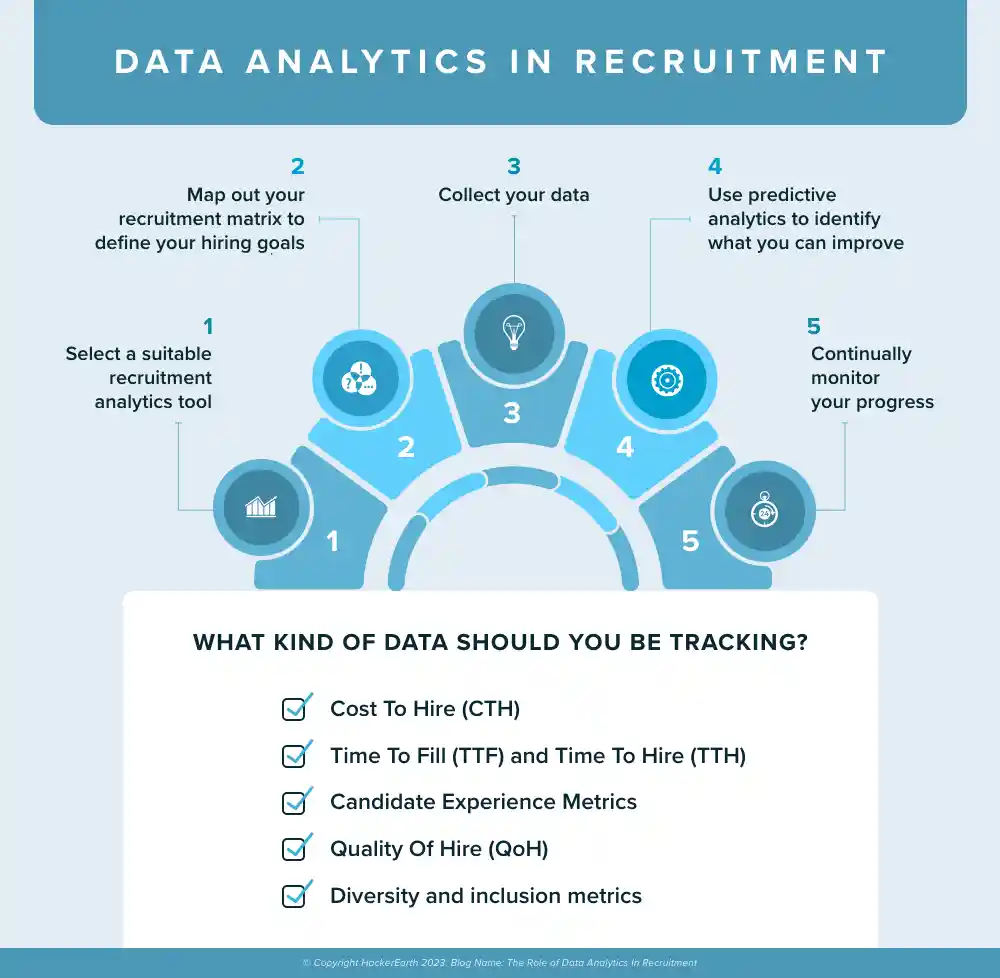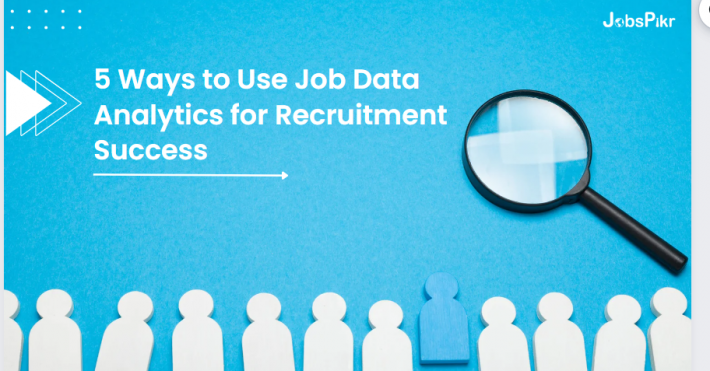The people in your company will ultimately determine the success or failure of your business. This was the headline of an Inc. article talking about the importance of people and how they are an organization’s most important asset. In a highly competitive business landscape, companies are recognizing that their workforce is a critical factor in determining the success or failure of their organization.
Having this understanding makes the talent acquisition process so much more important. In recent years, the field of recruitment has undergone a makeover to make it more agile and effective, based on sound data and insights. Over the last decade, job data analytics has emerged as a leading application in HR, helping organizations optimize their talent acquisition and retention efforts like never before.
In fact, job data analytics plays a crucial role in every aspect of talent acquisition, from identifying future talent needs and skill gaps to pinpointing the most promising candidates and keeping them engaged throughout the recruitment process. And with businesses now more focused than ever on employee retention, it’s no surprise that job data analytics is becoming a key tool for building a long-lasting workforce.
By leveraging data, organizations can create stronger, more successful teams, which lays the foundation for building a robust workforce. With this knowledge in hand, how can organizations go about crafting a sound yet steady recruitment strategy that sets them up for success? Read on.
The Role of Recruitment Data
Recruiting the right candidates is crucial to the success of any business, and data-driven recruitment has become increasingly popular. It involves analyzing the current recruitment process and continuously fine-tuning ineffective processes by looking at several important metrics beyond just the screening and interviewing process.
Recruitment metrics such as time to hire, candidate and hiring manager satisfaction, selection ratio, offer acceptance rate, and candidate experience provides valuable insights into optimizing the hiring activity and ensuring the right candidate is hired. When organizations objectively look at this data and take the necessary steps to refine processes, acquisition costs are reduced, candidate experience improves, and the quality of hire is boosted.
What does that mean? Internal data alone may not be sufficient to gain a complete picture of what’s going wrong. It’s important to combine recruitment data with job data analytics to get a holistic view of internal and external factors. By combining these two data sets, businesses can tap into a “treasure trove” of data and ensure they are hiring the right candidates for the job.
How Job Data Analytics Creates Recruitment Success

Source: Hackerearth
Job data analytics is an essential tool for organizations that want to build a strong workforce and maintain a low employee turnover rate. It involves collecting, analyzing, and interpreting data related to job roles, talent, and recruitment efforts. By utilizing this data, organizations can identify key job skills required for a position, ensuring they attract top talent for newly created roles.
Identifying Key Job Skills
A well-crafted job description is crucial for attracting the right candidates, as it serves as the first point of interaction between the organization and a potential candidate. Outdated skill data can harm the organization by screening ill-equipped candidates.
This is where effective market research coupled with job data insights comes into play. By analyzing skills in demand and the appropriate qualifications required for specific roles, organizations can create job descriptions that accurately reflect the necessary skillset.
Sourcing Candidates
Job data analytics can also be used to source candidates in areas with a higher skills/role concentration. Insights specific to location demographics can ascertain potential candidate pools for certain positions that may have gone unnoticed without the right tools.
For example, several MNCs – Amazon, Xerox, and Adobe to name a few – continue to hire overseas workers to get access to top talent from multiple countries. This means that organizations don’t have to limit themselves to a particular geography and can expand the reach of recruitment efforts to hire the most qualified candidates located practically anywhere. It also ties into diversity and building a global workforce as the hiring scope is not limited to a certain city or country.
Ideal Candidate Profiling & Talent Assessment
An organization’s ideal candidate can vary depending on the business, industry, team, and type of role. Yet, having that knowledge and assessing candidate fitment based on that ideal profile can help weed out talent who do not meet the criteria. Through job data analytics, identifying the top hard and soft skill requirements, qualifications, years of experience, and sector background, resumes can be effectively screened to hire the best person for the job based on merit and not personal characteristics.
Predicting Future Talent Needs
For organizational excellence, companies must spend sufficient time planning for the future. People are at the heart of every business and strategic workforce planning can be an effective way to ensure that your organization continues to perform well regardless of external climatic conditions.
Organizations must analyze how future conditions will change pertaining to the labor market, company growth, entry into new markets, industry trends, advances in technology, and even the economic climate to ascertain future workforce needs through job data analytics. Market data, analysis of its fluctuations, and location expansions or contractions can help determine the skills, positions, and number of future employees required by an organization.
Equal Opportunities Fostering Diversity, Equality & Inclusion
Unconscious recruitment bias – from stereotypes, racial profiling, preconceived notions, or past experiences – can hinder the recruitment process in building a diverse workforce. Speaking on the subject in an interview with The Balance, Tanya Sinclair – Chief People Officer at Toronto-based Artscape says, “Don’t expect that all diverse candidates will come to your organization. Companies have to do the work it takes to attract a wider talent pool. Putting up a job posting and waiting to see what happens is not enough. Companies need to constantly work at ensuring that they seek out, engage with, and invite diverse applicants to apply.”
Job descriptions should be inclusive by using gender-neutral language and avoiding language that could be perceived as aggressive or competitive. The focus should be on the required credentials to attract qualified candidates from all backgrounds, including underrepresented groups.
Job data analytics can help mitigate any unintentional biases by keeping the focus on skills and qualifications. As Tanya mentions, it can also help organizations headhunt candidates meeting the criteria, inviting them to submit their candidature for available positions.
Conclusion
With the advances in recruitment, companies need to step up their processes to be on par with change. Job data analytics – via a tool like JobsPikr – brings organizations one step closer to operating in a high-efficiency, high-reward environment.
Needless to say, this allows them to benefit from being a strong employer of choice fostering a merit-based culture. This, in turn, attracts highly qualified talent who are likely to perform well and remain with the organization for a longer period, thus helping the business thrive.
JobsPikr provides comprehensive job data solutions – covering diverse industries and locations – on job market trends, salary data, and hiring patterns. With over 70,000 global data sources scanned daily, our insights are accurate and help our clients make quick and informed decisions. To know more, visit our solutions page.



